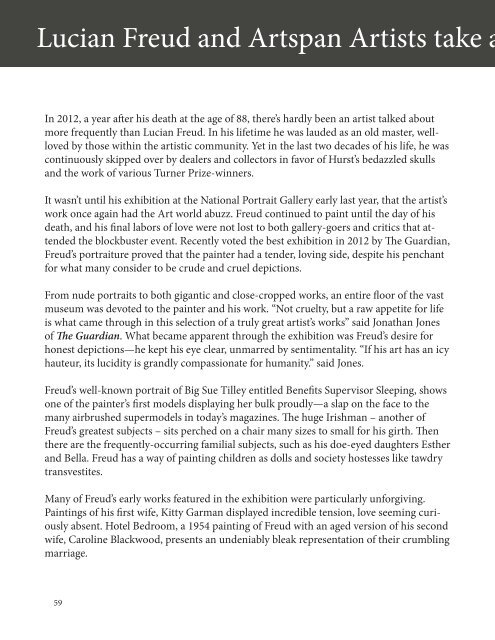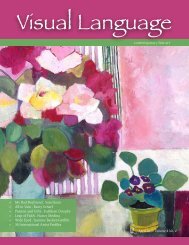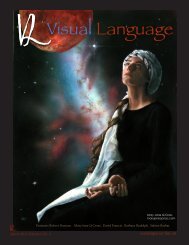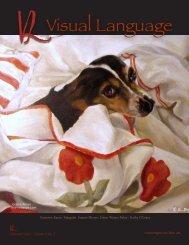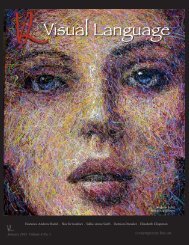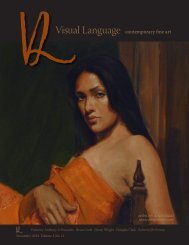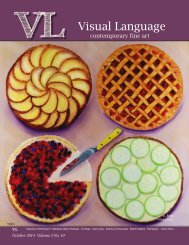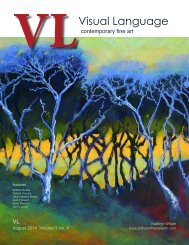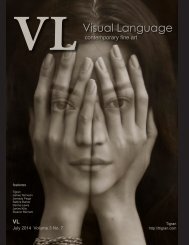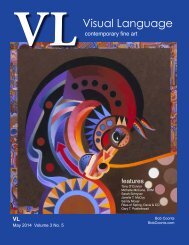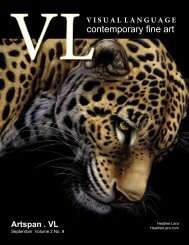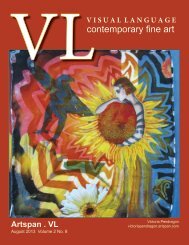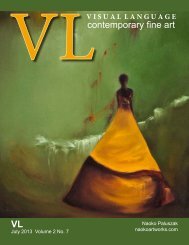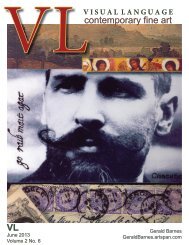Visual Language Magazine Contemporary Fine Art March 2013 Vol 2 No 3
Visual Language Magazine is a contemporary fine art magazine with pages filled with dynamic fine art, brilliant color and stimulating composition. Visual Language is the common connection around the world for art expressed through every media and process. The artists connect through their creativity to the viewers by both their process as well as their final piece. No interpreters are necessary because Visual Language crosses all cultures around the world.
Visual Language Magazine is a contemporary fine art magazine with pages filled with dynamic fine art, brilliant color and stimulating composition. Visual Language is the common connection around the world for art expressed through every media and process. The artists connect through their creativity to the viewers by both their process as well as their final piece. No interpreters are necessary because Visual Language crosses all cultures around the world.
Create successful ePaper yourself
Turn your PDF publications into a flip-book with our unique Google optimized e-Paper software.
Lucian Freud and <strong>Art</strong>span <strong>Art</strong>ists take a<br />
In 2012, a year after his death at the age of 88, there’s hardly been an artist talked about<br />
more frequently than Lucian Freud. In his lifetime he was lauded as an old master, wellloved<br />
by those within the artistic community. Yet in the last two decades of his life, he was<br />
continuously skipped over by dealers and collectors in favor of Hurst’s bedazzled skulls<br />
and the work of various Turner Prize-winners.<br />
It wasn’t until his exhibition at the National Portrait Gallery early last year, that the artist’s<br />
work once again had the <strong>Art</strong> world abuzz. Freud continued to paint until the day of his<br />
death, and his final labors of love were not lost to both gallery-goers and critics that attended<br />
the blockbuster event. Recently voted the best exhibition in 2012 by The Guardian,<br />
Freud’s portraiture proved that the painter had a tender, loving side, despite his penchant<br />
for what many consider to be crude and cruel depictions.<br />
From nude portraits to both gigantic and close-cropped works, an entire floor of the vast<br />
museum was devoted to the painter and his work. “<strong>No</strong>t cruelty, but a raw appetite for life<br />
is what came through in this selection of a truly great artist’s works” said Jonathan Jones<br />
of The Guardian. What became apparent through the exhibition was Freud’s desire for<br />
honest depictions—he kept his eye clear, unmarred by sentimentality. “If his art has an icy<br />
hauteur, its lucidity is grandly compassionate for humanity.” said Jones.<br />
Freud’s well-known portrait of Big Sue Tilley entitled Benefits Supervisor Sleeping, shows<br />
one of the painter’s first models displaying her bulk proudly—a slap on the face to the<br />
many airbrushed supermodels in today’s magazines. The huge Irishman – another of<br />
Freud’s greatest subjects – sits perched on a chair many sizes to small for his girth. Then<br />
there are the frequently-occurring familial subjects, such as his doe-eyed daughters Esther<br />
and Bella. Freud has a way of painting children as dolls and society hostesses like tawdry<br />
transvestites.<br />
Many of Freud’s early works featured in the exhibition were particularly unforgiving.<br />
Paintings of his first wife, Kitty Garman displayed incredible tension, love seeming curiously<br />
absent. Hotel Bedroom, a 1954 painting of Freud with an aged version of his second<br />
wife, Caroline Blackwood, presents an undeniably bleak representation of their crumbling<br />
marriage.<br />
59


